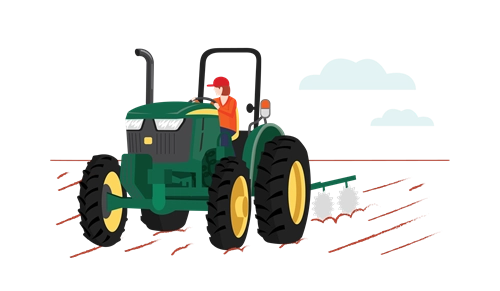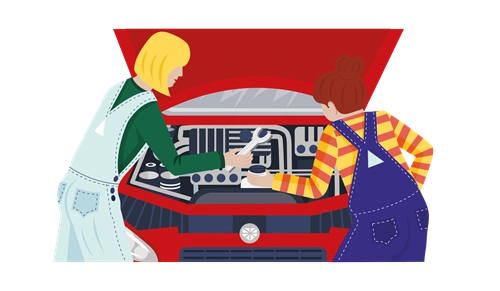-
Curriculum alignment
Curriculum alignment
Science
AC9S8U02 – Analyse the relationship between structure and function of cells, tissues and organs in a plant and an animal organ system and explain how these systems enable survival of the individual
AC9S8H01 – Explain how new evidence or different perspectives can lead to changes in scientific knowledge
AC9S8H04 – Explore the role of science communication in informing individual viewpoints and community policies and regulations
AC9S8I08 – Write and create texts to communicate ideas, findings and arguments for specific purposes and audiences, including selection of appropriate language and text features, using digital tools as appropriate
Design and Technologies
AC9TDE8K01 – Analyse how people in design and technologies occupations consider ethical and sustainability factors to design and produce products, services and environments
AC9TDE8K02 – Analyse the impact of innovation and the development of technologies on designed solutions for global preferred futures
- S
- T
- E
- M
Biofabrication – communicating STEM frontiers
Years 7 and 8
Learning hook
New technologies can be difficult to get our heads around. Biofabrication is the production of complex biological products using raw materials such as living cells, matrices, biomaterials and molecules. Biofabrication combines materials engineering, biological sciences, additive manufacturing, nanotechnology and biomedical health technologies.
Watch this SBS The Feed documentary about biofabrication.
Tell students that this video was made nine years ago. What advances have been made since then?
Encourage students to wonder and anticipate what might now be possible with biofabrication.
Now watch this clip from BBC News published in 2022. How has the technology matured? What’s possible now?
Girls in focus
Many girls don’t recognise the diversity of career pathways available in engineering. In addition to biomedical applications, biofabrication is the basis of a material revolution that could help us replace major sources of waste with sustainable alternatives. Watch by Suzanne Lee, a fashion designer turned biofabricator who explains uses of additive manufacturing in sustainable material engineering.
Learning input
Discuss with students the importance of media for introducing new technologies to the public, and in building public awareness and support for those technologies.
Explain that as a class, you are going to be learning more about biofabrication applications, as well as developing skills as science communicators.
The first key question to explore is ‘What text features do STEM communicators typically use when introducing new technologies?’
Share the STEM Communication bingo sheet with the class and have students watch the two introductory videos again. As they watch, students can populate the bingo sheet with as many text features as they can. As a class, share back the features and create a single bingo sheet.
Here’s an example of text features you might like to use to get students started:
- physical model
- tissue up close
- animation
- verbal analogy
- real-life person who has benefited from the technology
- STEM professional in a lab coat
- lab setting
- interesting machine close up
Girls in focus
It’s important to introduce girls to diverse role models and demonstrate the range of career pathways taken by STEM professionals. Watch this interview with Dr Naomi Paxton on QUT’s Ready STEM Go YouTube channel to learn more about careers in biofabrication research.
Learning construction
Students work in pairs or small groups to research an application of biofabrication and create a short video to explain it to their peers.
Students could start their research with RMIT’s 2020 ‘Biofabrication and tissue engineering’ report, which identifies five priority clinical needs for biofabrication solutions:
- treating major physical trauma
- replacing lost muscle tissue
- helping people age well
- repairing nerve damage
- creating personalised diagnostics
Students could focus on one area and then select a particular application to research more closely.
Girls in focus
Research indicates that many girls are more motivated in STEM when they have opportunities to pursue their own interests, develop solutions that are human-centred, and engage creatively with tasks. Students may be motivated to investigate particular areas of biofabrication based on the health challenges of family members or friends. Alternatively, you could share the stories of individuals who experience particular health challenges and students could investigate the potential benefits of emerging biofabrication technologies.
Students will then share their research with their class as a three- to four-minute video, incorporating at least five of the STEM communication text features they identified on their bingo sheet.
Students should collate their research to answer the following key questions:
- What is the new technology?
- How does it work?
- Who will benefit from this technology? How?
Students should create a storyboard and script for their video prior to filming.
They can source snippets from other videos demonstrating the technology, but each snippet should be no more than 10 seconds long and must be cited at the end of the video. Students should create their own voiceover and play any roles of STEM professionals or members of the public, as required.
Optional extension:
As students are researching their technology and selecting media snippets to include in their final video, encourage them to consider the credibility of their source material. For example, they can apply the CRAAP test (Currency, Relevance, Authority, Accuracy and Purpose) to evaluate sources.
-
Rubric
Criteria
Beginning
Achieved
Exceeds
Understanding of the focus biofabrication technology
The video demonstrates a basic understanding of the technology and the human body system components being biofabricated.
The video demonstrates a clear understanding of the technology and how it works and the human body system components being biofabricated.
The video demonstrates a sophisticated and in-depth understanding of the technology and how it works and the human body system components being biofabricated.
Explanation of the technology impacts for beneficiaries
The video explains the technology’s basic benefits for an individual.
The video explains in detail the technology’s benefits for an individual.
The video explains in detail the technology’s benefits for a range of individuals.
STEM communication text features
The video uses some STEM communication text features.
The video uses five STEM communication features for clear effect.
The video uses five or more STEM communication features appropriately and effectively for the target audience.
Organisation and structure
Information is presented aligned to key themes.
Information is presented in a clear narrative or logical structure that is easy to follow.
Information is presented in a clear narrative or logical structure that is engaging, easy to follow and maintains viewer interest.
Overall presentation
Multimedia is used and connected to explain key points.
Multimedia is clear and integrated well to hold the viewer’s attention.
Multimedia is selected and presented in a way that captures attention and leaves a lasting impact on the audience.
Resources
Recent applications of biotechnology
- RBWH Foundation (2023) ‘World-first breast surgery just the beginning’.
- Dennis, J. (2022) ‘Brisbane bio-tech lab creates ‘revolutionary’ 3D-printed body parts to treat cancer patients’. ABC News
- Australian Museum (2023) ‘The UNSW bone ink printing team – Finalist, 2023 Eureka Prize for Innovative Use of Technology’.
- Harvard John A. Paulson School of Engineering and Applied Sciences (2022) ‘This artificial ventricle is a major step forward for organ biofabrication’.










